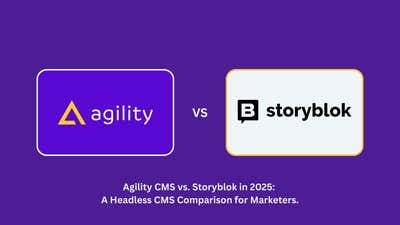The Power of Storytelling in Marketing: Capturing Hearts in the Digital Age


Today, attention is currency, and storytelling has become a powerful tool for capturing it. This article explores the art of storytelling in marketing, its impact on consumer engagement, and how brands can harness it to stand out in a crowded marketplace.
A Tale of Two Scrollers
It's 7:30 AM, and Sarah, a busy marketing executive, reaches for her phone. In the next 15 minutes, she’ll scroll through three social media feeds, two news apps, and a handful of ads before her coffee has time to cool.
She's well on her way to meeting the global daily average of 6 hours and 35 minutes spent online. (Data Reportal).
Meanwhile, Sam, rides the bus to college, headphones on, alternating between a podcast and a mobile game. By the time he reaches campus, he’s interacted with more branded content than his grandparents did in a week!
Welcome to the world of the attention economy. Every click and scroll is a potential opportunity, and losing a customer's interest. Some studies suggest this can take as little as 0.05 seconds!
Understanding Storytelling in Marketing
We are hardwired for stories. Throughout recorded time, they have flourished, finding expression in our philosophies, fiction, and arts. They captivate our minds, touch our hearts, and resonate profoundly.
From fantastical fairy tales to the marvels of mythologies, we intrinsically recognize in stories an unparalleled ability to teach lessons, reveal truths, evoke emotions, and illuminate the human character. This is the ‘magic’ that makes storytelling not just powerful but essential to human communication and understanding.
For marketers, storytelling is also a potent tool. It is a way to evoke meaning, forge connections, and create brand narratives. Beyond listing product features, stories resonate with our deeper desires, touching on our customers' experiences, desires, and challenges.
Key Elements of a Compelling Marketing Story
Drawing from the wisdom of marketing experts and storytelling gurus, let's explore the essential components of effective brand storytelling:
1. Emotion
Seth Godin, a marketing legend, reminds us that "Marketing is no longer about the stuff you make, but the stories you tell." Evoking emotion creates lasting impressions and fosters loyalty.
2. Conflict and Resolution
Donald Miller, creator of the StoryBrand framework, stresses that every compelling story has a conflict and a resolution. In marketing, this often means presenting a customer’s problem and showing how your product or service provides the solution.
3. Relatability
Ann Handley, a pioneer in digital marketing, emphasizes the importance of crafting stories that resonate personally. Your audience should see themselves in your story, recognizing their own experiences and challenges.
4. Simplicity
Good stories are easy to understand. They cut through the noise with straightforward, empathic messages that can be quickly grasped.
5. Authenticity
Bernadette Jiwa, a brand storytelling expert, advises: "Go out and find some real people. Listen to their stories." Authenticity builds trust, and today's savvy consumers can spot a fake story a mile away.
6. Humanity
Ultimately, storytelling is about humans. It's about people, their lives, and their journeys. Brands should focus on the human aspects of their stories, showing empathy and understanding towards their audience.
🔑 Key Point: Focus on authenticity. People are searching for the real and the relatable. So, show them who you are, not just what you sell.
Crafting Your Brand Story

Creating a compelling brand story that integrates your mission, values, and vision is crucial for establishing a strong brand identity. Here's how to do it:
- Define Your Core Message: Identify the core message you want to convey. This should reflect your brand's mission and values. What do you stand for? What is your purpose?
- Know Your Audience: Understand your audience and what matters to them. Your story should resonate with their values, challenges, and aspirations.
- Create a Character: Every story needs a hero. In brand storytelling, this hero should be your customer, with your brand as the guide. Reference Donald Miller's StoryBrand framework, which draws on Joseph Campbell's hero myth.
- Build a Narrative Arc: Structure your story with a clear beginning (the problem), middle (how your brand helps), and end (the positive outcome).
- Be Authentic: Ensure your story is true to your brand and reflects your real experiences and values. Avoid exaggeration or making promises you can't keep.
- Use Emotion: Tap into the emotional aspects of your story. Use vivid imagery, relatable scenarios, and emotional language to connect with your audience more deeply.
- Keep It Simple: Your story should be easy to understand and remember. Avoid complex jargon and keep your message clear and concise.
- Incorporate Visuals: Use images, videos, and infographics to enhance your story and make it more memorable.
- Distribute Across Channels: Share your story across all your marketing channels – your website, social media, email newsletters, and even your product packaging.
Once you've crafted your brand story, the next step is to integrate it across all your marketing channels.
Examples of Authentic Storytelling
In a saturated digital landscape, storytelling IS a crucial marketing strategy. But, brands must navigate this terrain carefully, because consumers are becoming increasingly story-savvy and any sniff of inauthenticity will be taken as a sign of ‘fake’ marketing.
A Social Media Today survey revealed that 90% of millennials consider brand authenticity crucial. Patagonia exemplifies this with stories of environmental activism that align perfectly with their business practices.
So, what are the key principles underlying authentic storytelling?
- Emotion: Stories that evoke emotions are more memorable. Amazon’s Christmas 2023 ”Joy Ride” campaign featured three elderly friends sitting on a park bench, nostalgically observing children sledding. One of the ladies orders the trio a set of seat cushions, enabling them to rekindle their childhood sledding activities and recapture the joy of their youth. The entire ad accompanies an instrumental version of The Beatles' "In My Life."
Spotify’s “Wrapped” campaign succeeded by offering personalized year-end summaries of each user’s listening and cleverly evoking the memories and moments of that user’s year. By crafting campaigns that fans wanted to share, Spotify succeeded in promoting its brand, personalizing its offering, and developing a yearly event its users actually look forward to.
- Conflict and Resolution: Presenting a problem and its solution. TOMS Shoes' "One for One" story illustrates how each purchase solves a problem for someone in need. By highlighting the lack of adequate footwear among children in impoverished regions and supplying footwear to those who lack it, TOMS addresses an issue and provides a resolution.
- Relatability: Tailoring narratives to address specific consumer needs. Airbnb's "Belong Anywhere" campaign succeeded by sharing relatable stories of hosts and travelers, transforming the brand from a mere accommodation platform to a facilitator of unique human experiences.
- Simplicity: Clear, concise messaging cuts through the noise. Apple doesn't just list product features; it tells simple stories of how its products change lives, making its marketing messages stick.
Challenges and Considerations
While storytelling can be powerful, it's not without pitfalls:
Oversaturation: With most major brands adopting storytelling, standing out becomes challenging. The "underdog startup" narrative, for instance, has become cliché.
Inauthenticity: Forced or disingenuous narratives can backfire spectacularly. Pepsi's 2017 ad with Kendall Jenner, attempting to tell a story of unity amid social protests, was widely criticized as tone-deaf.
Story Jadedness: Consumers exposed to numerous brand narratives daily may become skeptical. Authentic, relevant stories are key to overcoming this.
Overreliance on storytelling: Storytelling alone doesn't guarantee success. Toys "R" Us's bankruptcy in 2017 shows that nostalgia and strong brand narratives can't overcome fundamental business issues.
Integrating Storytelling Across Marketing Channels
In today's multi-channel marketing landscape, it's crucial to weave your brand story consistently across all touchpoints. Here's how to effectively integrate storytelling across various marketing channels:
- Website:
- Use your homepage to introduce your brand story
- Create a dedicated "Our Story" or "About Us" page
- Incorporate storytelling elements in product descriptions and blog posts
- Social Media:
- Share behind-the-scenes content that highlights your brand's journey.
- Use platforms like Instagram Stories or Facebook Live for real-time storytelling.
- Encourage user-generated content that aligns with your brand narrative.
- Email Marketing:
- Craft email series that unfold your brand story over time.
- Use storytelling techniques in subject lines to boost open rates.
- Personalize stories based on subscriber data and behavior.
- Content Marketing:
- Develop long-form content like whitepapers or ebooks that dive deep into your brand's expertise and values.
- Create video content that brings your brand story to life visually.
- Use case studies to showcase real-world applications of your brand story.
- Advertising:
- Develop ad campaigns that focus on narrative rather than just product features.
- Use sequential advertising to tell your story across multiple ad touchpoints.
- Incorporate storytelling elements in your ad copy and visuals.
- Customer Service:
- Train support staff to understand and communicate your brand story.
- Use storytelling techniques in FAQ sections and help with documentation.
- Packaging and Product Design:
- Incorporate elements of your brand story into physical product design or packaging.
- Include story snippets or QR codes on packaging that lead to more in-depth brand content.
🔑 Key Point: Consistency is key. Ensure that your story remains coherent and authentic across all channels while adapting to each platform's unique strengths and audience expectations

Measuring the Impact of Storytelling in Marketing
After crafting your brand story, it's important to measure its impact to understand its effectiveness and refine your approach. Here are key metrics to track:
- Engagement Metrics: Time spent on a page, social media shares, comments, and likes.
- Brand Awareness: Use surveys and social listening tools to track brand mentions and sentiment.
- Conversion Rates: Analyze if storytelling efforts are driving desired actions.
- Customer Feedback: Collect direct feedback through surveys, reviews, and interviews.
- Sales Data: Compare sales data before and after implementing your storytelling strategy.
- Retention Rates: Track customer retention rates to see if storytelling fosters brand loyalty.
- Return on Investment (ROI): Calculate the ROI of your storytelling campaigns.
To monitor these metrics effectively, use tools like Google Analytics, social media analytics platforms, and customer feedback software.
Conclusion
Storytelling in marketing is more than just a buzzword; it's a powerful tool that can transform your brand's relationship with its audience. By understanding the principles of effective storytelling, identifying current thought leaders, crafting a compelling brand story, and measuring its impact, you can create a marketing strategy that resonates on a deeper level.
Remember, in today's digital age, attention is the new currency. Your story is your chance to capture it. So, go ahead, spin your yarn, and watch as your brand story weaves its way into the hearts and minds of your audience. Just ensure it's a story worth telling—and one your audience will want to hear.

About the Author
Adam is an experienced marketing leader with a natural curiosity about human behaviour. He heads up Agility's marketing efforts, helping others discover and experience the easy to use CMS with insane support. A big believer of living in the moment, Adam doesn't want to see you wasting the precious time you have on this earth on clunky, outdated content management systems. He's been there. It wasn't pretty. Give Agility CMS a try and start enjoying your life while you rock your job and have less headaches. Learn more about Adam HERE



